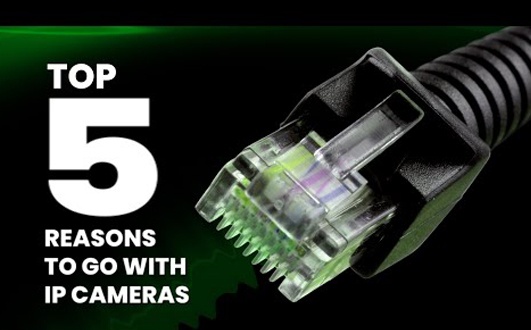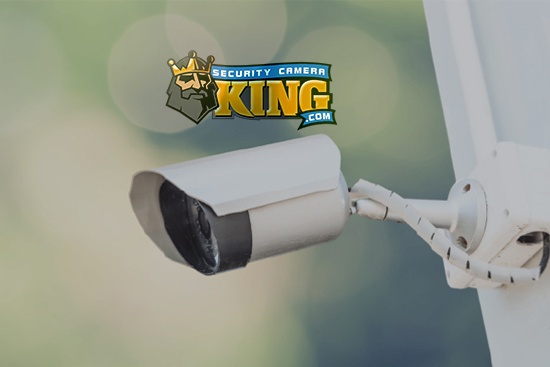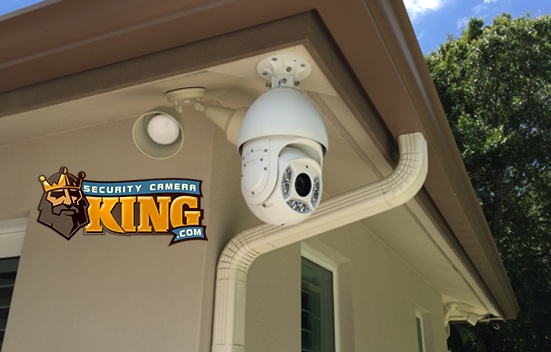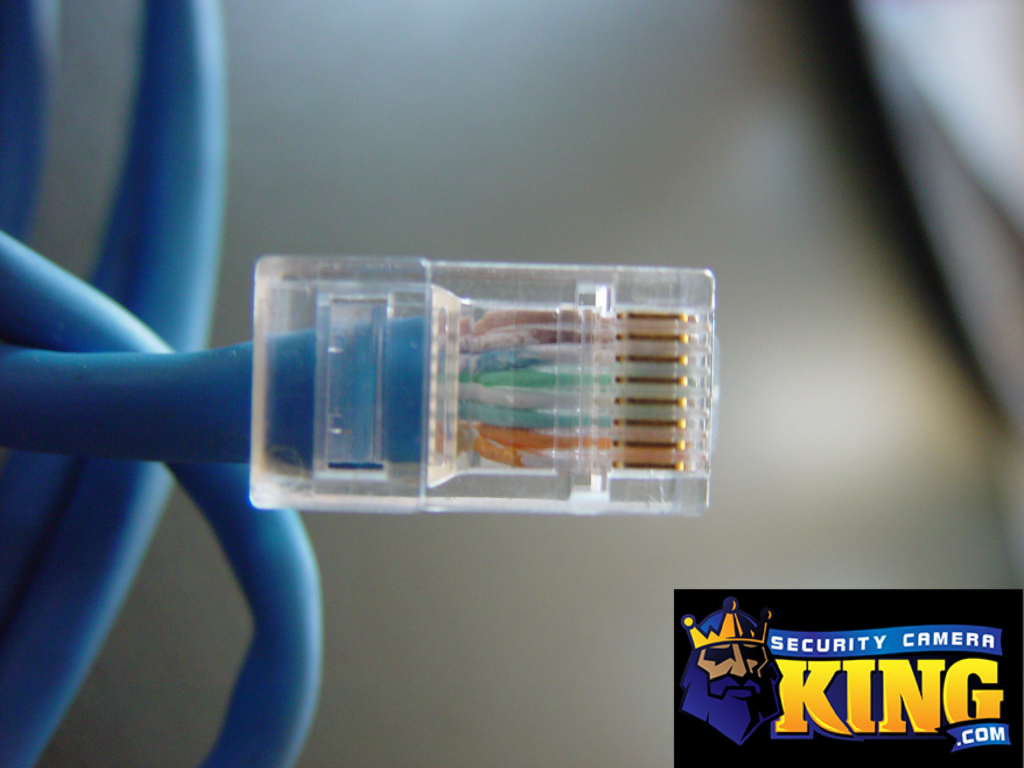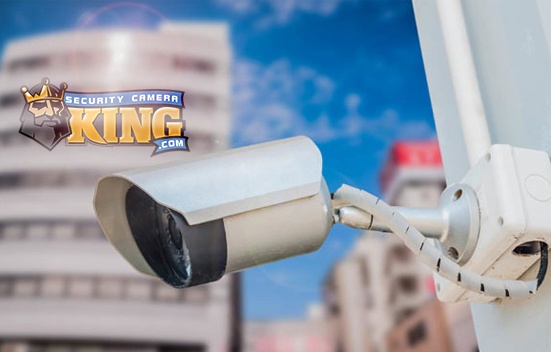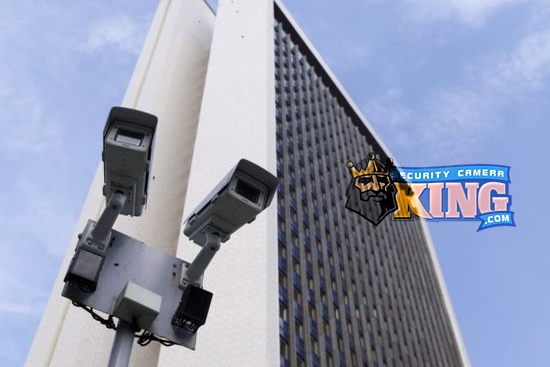Hey everyone, thanks for joining us. Today’s article and accompanying video are all about IP and Network Cameras and the primary benefits of choosing them in lieu of traditional COAX Cameras. Both types of Cameras- COAX and IP- have benefits that make them a unique choice for different situations. There is no clear winner between the two, so we don’t want you to think one option is better than the other. However, today we want to talk a bit about what specific features Ip cameras have, and therefore situations you might find them the preferable choice- and why. First, it helps to know what an IP camera is, and why it’s different from a Coax camera.
IP cameras are newer than their COAX counterparts- and have only been around since the mid-1990s. Back then, the technology was new, expensive, and not readily available to everyone. Unlike COAX cameras, IP cameras do not use RG9 COAX cable to send audio and video data to their recorder. Instead, IP cameras connect over a local network- or directly to a video recorder’s private network by using Cat5e or Cat6 Ethernet cable with a standard RJ45 connector. Now, Ip cameras are extremely commonplace, and are often just as cost-effective as COAX cameras and offer their own unique benefits. Check out the video, or read along to check out our list of the Top 5 Reasons you should go with IP cameras.
The TOP 5 Reasons to Go with IP Cameras:
The overwhelming majority of IP cameras available support some form of Power Over Ethernet- or POE. What this means is that rather than running multiple cables for each camera, one for power and one for video, you will be able to simply run a single ethernet cable for each camera to supply both the power the camera needs, and carry its audio/video data. There are some high Powered PTZ cameras out there that still require external power or advanced solutions like ePOE or HiPOE. Not only does this make installation of new cameras much simpler as there doesn’t have to be multiple cable runs for each camera in the system; This allows for many systems, particularly smaller systems to be virtually plug N play when used with an NVR with onboard POE.
Reason #2 Ip cameras can work with existing DVR systems
Most modern Digital Video Recorders (or DVRs) are hybrids which means they will be able to connect to and process the data from both COAX cameras and IP cameras as well. This means that you will be able to add IP cameras to existing COAX systems. In other words, you can take advantage of some of the great network features of IP cameras without having to up-end an entire Coax system on a DVR, replace it with a Network Video Recorder (NVR), and entirely IP cameras. Referring back to Reason #1, adding a few IP cameras to an existing system can be a simpler install than even adding more coax cameras to an existing coax install- saving you time and money.
Reason #3: IP Cameras have Individual deeper levels of Control
While COAX cameras traditionally have some kind of OSD to access their individual settings- doing so is often tedious and unresponsive. Furthermore, the OSD doesn’t always offer the level of depth or ease of control one might hope for when it comes to changing a camera’s settings. One of the great features of IP cameras is that they can be accessed and controlled individually via the network, offering access to camera-specific features that may not even be seen by the recorder. This offers you a dynamic level of control that just isn’t possible with Coax cameras. This makes setting up tours, adjusting Pan/Tilt/ZOOM settings, adjusting color profiles, alarm triggers, and many other options a breeze
Reason #4: Encrypted Digital Data
One of the nicest features of IP cams is the option to encrypt the digital data. Enabling encrypting means the video data will be encoded in such a way that is not viewable by anyone who may be trying to maliciously access it. Encrypted data cannot be hijacked as easily or simply as an analog video signal- which can be taken right of an active stream. This offers an additional layer of privacy and protection of your recorded data. It’s important to mention though, that encryption must be manually activated and set up to take advantage of this feature.
Reason #5: Better AI and Analytics Features
Though many DVRs are capable of onboard AI features, there are limits to how COAX systems can do this. COAX cameras cannot do any AI data processing themselves and instead feed video data to an AI capable DVR, which using its limited resources is then able to apply the analytics and AI on its end. The processor that handles this is a special AI Chip, but it has limits on how many channels of AI data it can process at one time. Only IP cams that are AI or analytics capable can perform that Ai processing on the camera itself, with their own AI chips. What this means is that without the recorder doing the AI work on its own, you’ll be able to use more AI features across more channels. You’ll also be able to use more complex AI features such as Facial Capture and Facial Recognition.
There are many more reasons to consider IP cameras- but these were our Top 5. If you enjoyed the video, don’t forget to hit that like button and subscribe for more content! For more information on IP cameras, pricing or compatibility- don’t hesitate to give one of our Sales Pro’s a call at 561-288-5258.
Also, Find us on: Facebook | Twitter | YouTube
Check out our 8MP/4K IP Series Cameras!

